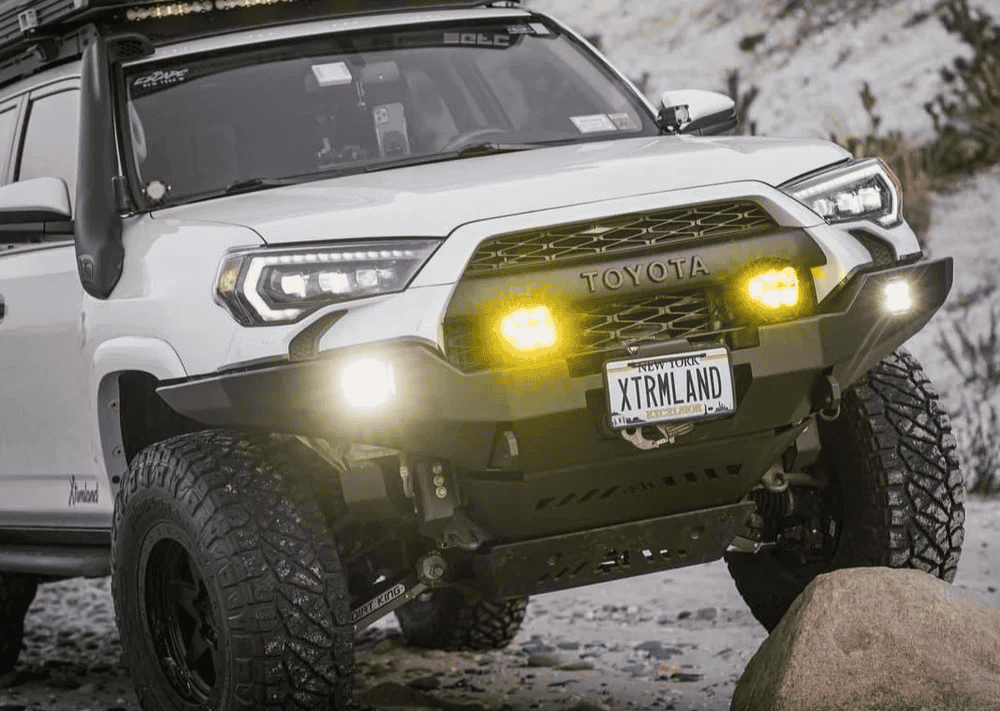Overland Vehicles

An overland truck carries more than a weekend tailgate kit. It needs sealed storage, modular mounting points, and structure you can trust when the trail gets rutted. That is where an expedition truck cap earns its keep. Compared with a basic topper, a purpose built canopy uses stronger frames, reinforced corners, and hardware that resists vibration over corrugations.
Material selection comes first. Aluminum canopies are light, repairable, and highly modular thanks to extrusion channels for brackets and panels. Composite shells insulate better, keep weight low, and often arrive with smooth interiors that are easy to clean. Steel is rare but offers serious strength at a weight penalty, best for heavy duty racks or commercial use.
Profile matters. Cab height caps keep drag down and fit garages. Mid rise adds interior volume without a top heavy feel. High rise models maximize sleeping platforms and tall storage but may need upgraded suspension to control sway. For Tacoma fitment, confirm bed length, rail shape, and third brake light integration to avoid wiring surprises.
Access defines daily usability. Gullwing side doors make the center of the bed reachable, which prevents the crawl and unload routine. Full height rear doors help with drawer systems and fridges. Locks should be keyed alike and dust resistant. If you plan to add a tent or awning, check dynamic and static load ratings for both the cap roof and the rack system.
Weight must be tracked by axle and by vertical placement. Keep dense items down low in drawers or over the axle. Use the canopy’s internal frame to anchor tie down points. A conservative dynamic roof load target for many mid size trucks sits in the 150 to 220 pound range before racks and accessories.
Positive pressure vents push air out as you drive, reducing dust intrusion on desert tracks. Add tailgate gap seals and compressible bulb seals around doors. When storing fuel or a fridge inside, include louvered panels or small fans to refresh air.
A canopy is a natural home for a secondary battery, solar charge controller, and LED scene lighting. Pre wire for radios or Starlink so antennas can mount to the rack without messy cable routing later.
A Tacoma overland cap benefits from a planned interior. Start with the mission. If the bed carries bikes and recovery gear, prioritize side access and external shovel mounts. If it is a sleep in canopy, design a platform that spans the wheel wells and allows sliding bins below. If you need quick camp setups, a roof tent with a 270 awning keeps everything fast and tidy.
Organization keeps weight from multiplying. Modular MOLLE panels on the canopy walls tame small items. A fridge slide near the rear door prevents overreach. Soft goods pack into labeled duffels that fit drawers. For wet gear, dedicate an exterior rack box or a lined bay with a drain.
Water and cooking matter off grid. A simple 10 to 20 gallon tank tucked against the cab, a compact pump, and a rear sprayer give you dishes and showers without lifting jerry cans. A dual burner stove on a slide out galley keeps prep out of the dust. Add heat shielding and a fire extinguisher within reach of the rear door.
Electrical systems should be simple and serviceable. A lithium battery sized for your load, a DC DC charger tied to the alternator, and a solar panel on the cap roof cover most needs. Mount fuses where you can see them. Label every circuit. Use sealed switches near the doors for zone lighting.
Composite interiors dampen heat and cold, while foam panels and carpeted headliners reduce condensation. Weather strips and drip channels keep rain out during side door access. If winter travel is likely, plan a safe, vented heater with a proper bulkhead penetration.
Choose a rack that ties into the canopy frame, not just the skin. Crossbar spacing must match your tent rails. A 270 awning needs a stout corner mount and often a support leg in wind. Verify that added height still clears your garage or favorite trailhead gate.
Mount a shovel and traction boards to exterior brackets. Keep a first aid kit and a satellite messenger accessible from the rear door. Balance spare fuel with route planning to avoid excess weight.
Once your plan is clear, matching hardware to habits becomes straightforward. If you want a turnkey approach with design, fabrication, and install in one place, explore our Overland rigs for proven configurations and inspiration. When a bespoke solution fits better, our team can design a Tacoma overland canopy layout with sealed storage, power, and rack systems that support real travel.
A full expedition truck cap build often includes a drawer system, water on board, integrated lighting, and power distribution. If you are comparing fitment, materials, or load ratings, our Custom overland upfit process walks through needs analysis, CAD, and staged installs to keep your truck useful while we build.
Curious about our approach, shop, and handoff experience? See Why choose OZK Customs to understand how we test, explain, and deliver each rig so you leave confident and road ready.
We can help translate your notes and sketches into a Tacoma overland cap that stays quiet on the highway, seals tight against dust, and works smoothly at camp. Share your route, season, crew size, and gear list, and we will guide you to the right canopy, rack, and interior layout for your overland truck.
Ready for a purpose built canopy and overland upfit that matches how you travel? Tell us your route, cargo, and crew. We will design a Tacoma overland cap system with sealed storage, integrated power, and trail proven accessories, then build and test it at our shop. Submit the form to get a tailored spec and timeline.
ADDRESS:
6159 E Huntsville Rd, Fayetteville, AR 72701
PHONE:
(479) 326-9200
EMAIL:
info@ozkvans.com